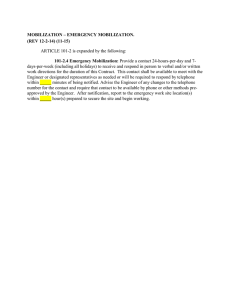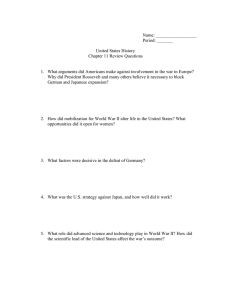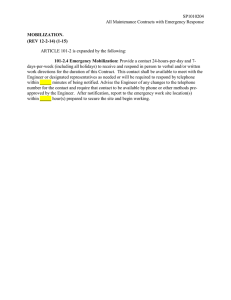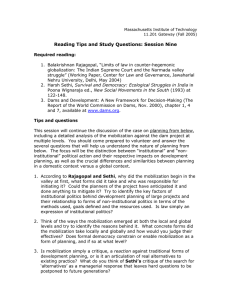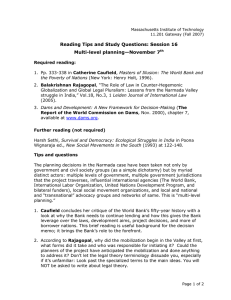Reading Notes
advertisement
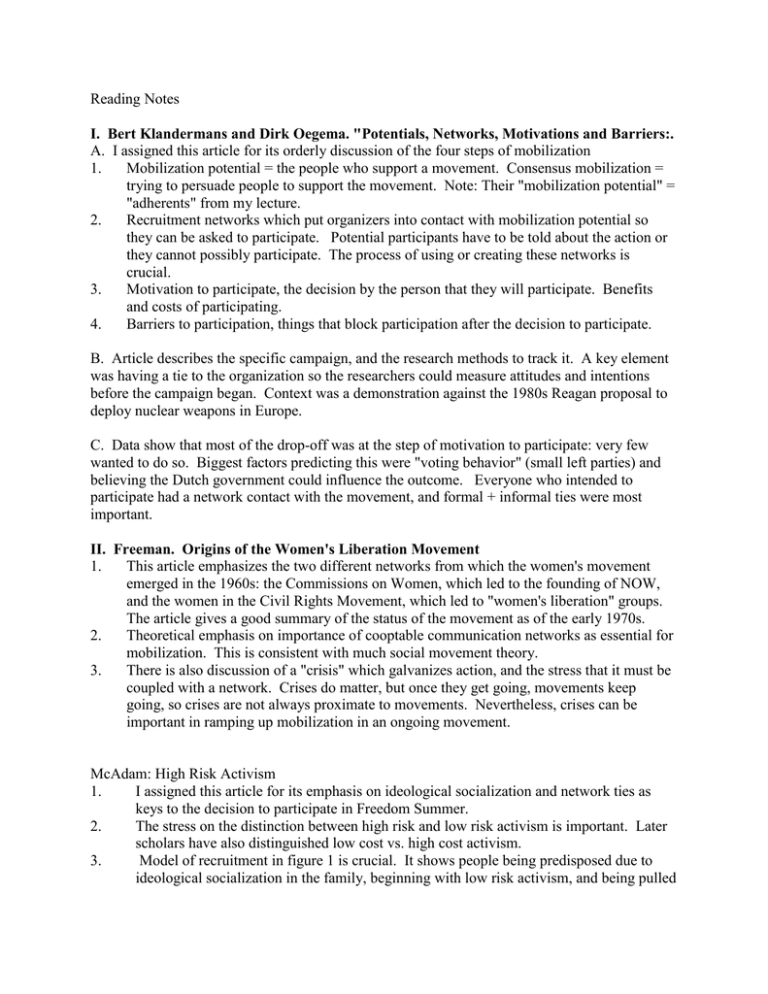
Reading Notes I. Bert Klandermans and Dirk Oegema. "Potentials, Networks, Motivations and Barriers:. A. I assigned this article for its orderly discussion of the four steps of mobilization 1. Mobilization potential = the people who support a movement. Consensus mobilization = trying to persuade people to support the movement. Note: Their "mobilization potential" = "adherents" from my lecture. 2. Recruitment networks which put organizers into contact with mobilization potential so they can be asked to participate. Potential participants have to be told about the action or they cannot possibly participate. The process of using or creating these networks is crucial. 3. Motivation to participate, the decision by the person that they will participate. Benefits and costs of participating. 4. Barriers to participation, things that block participation after the decision to participate. B. Article describes the specific campaign, and the research methods to track it. A key element was having a tie to the organization so the researchers could measure attitudes and intentions before the campaign began. Context was a demonstration against the 1980s Reagan proposal to deploy nuclear weapons in Europe. C. Data show that most of the drop-off was at the step of motivation to participate: very few wanted to do so. Biggest factors predicting this were "voting behavior" (small left parties) and believing the Dutch government could influence the outcome. Everyone who intended to participate had a network contact with the movement, and formal + informal ties were most important. II. Freeman. Origins of the Women's Liberation Movement 1. This article emphasizes the two different networks from which the women's movement emerged in the 1960s: the Commissions on Women, which led to the founding of NOW, and the women in the Civil Rights Movement, which led to "women's liberation" groups. The article gives a good summary of the status of the movement as of the early 1970s. 2. Theoretical emphasis on importance of cooptable communication networks as essential for mobilization. This is consistent with much social movement theory. 3. There is also discussion of a "crisis" which galvanizes action, and the stress that it must be coupled with a network. Crises do matter, but once they get going, movements keep going, so crises are not always proximate to movements. Nevertheless, crises can be important in ramping up mobilization in an ongoing movement. McAdam: High Risk Activism 1. I assigned this article for its emphasis on ideological socialization and network ties as keys to the decision to participate in Freedom Summer. 2. The stress on the distinction between high risk and low risk activism is important. Later scholars have also distinguished low cost vs. high cost activism. 3. Model of recruitment in figure 1 is crucial. It shows people being predisposed due to ideological socialization in the family, beginning with low risk activism, and being pulled 4. 5. in over time into a self-reinforcing feedback loop. Biographical availability as an important concept (lack of family/job ties that prevent the action) Social ties to other activists are the strongest predictors Wood & Hughes. Moral Basis of Moral Reform 1. I assigned this article for its emphasis on the way a religious conservative movement is embedded in family socialization and a consistent worldview. 2. This is posed as a criticism of status inconsistency theory, which was popular at the time it was written. That theory is no longer defended by anyone that I know of. That theory basically was a "displacement model" type theory, which said people participated in movemetns irrelevant to their interests because of their frustration with their social status 3. Focus on adherents: public opinion
